A Sense of Place: The Role of Experiential Design in Creating Cohesive and Vibrant Spaces
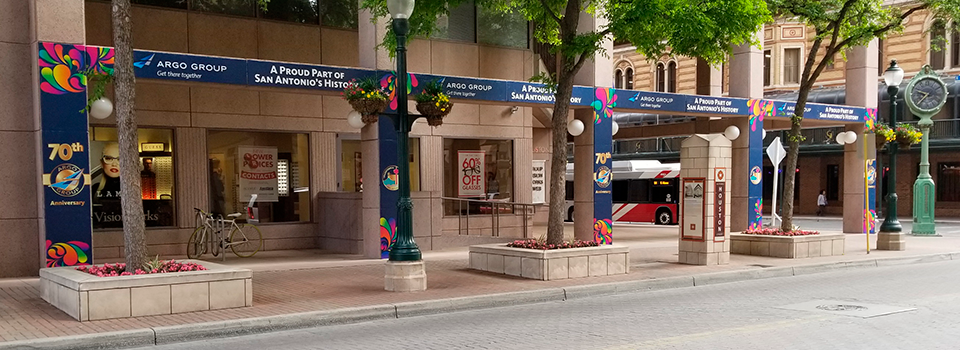
So much about design is taken for granted, especially design’s role in creating spaces. Whether discussing hospitals or entertainment districts, experiential design and the environmental graphics that are produced from it, are a powerful element of design that not only help define a space, they also help to invoke specific emotions and actions. Before we dive in to how experiential design evoke emotion and action, lets explain what is meant by experiential design.
What is Experiential Design?
Experiential design is the method of creating a space in a way that shapes a specific experience for the user, be it a customer, employee, tourist, or other user. It encompasses multiple disciplines including architecture, graphic design, interior design, and others, often working in concert together to create the many layers of a comprehensive experiential design. As it relates specifically to graphic design, experiential design is the process of integrating typography, color, images, and materials to create a sense of space.
The Role of Experiential Design
Experiential design serves many critical roles in the development and use of space. Often, experiential graphic design can make or break a space by influencing whether or not a space is ultimately utilized as intended. Experiential design influences the use of space by serving four key roles:
Defining Space and Purpose
Experiential design conveys a sense of place by defining borders, establishing identity, and conveying purpose. Visual borders, whether on walls or free-standing panels and other structures, establish where one type of space begins and ends. The use of color, images, and other brand elements create a sense of identity that is unique to the space. It can be an extension of an organizational brand, such as on a corporate campus, or a cultural brand, such as an entertainment district in a specific city like San Antonio. In either case, the environmental graphics employed create a sense of place and convey specific feelings and purpose, such as community, enjoyment, productivity, or relaxation.
One great example are the graphics we designed for Argo Group. We integrated a number of techniques to carry branding throughout the space. Utilizing a consistent design, we wove their mission statement throughout the facility to carry through a sense of purpose and reinforce their mission to employees and visitors. The same design elements were carried through in the frosted glass on the conference rooms. By utilizing frosted glass, light was able to pass through while creating a privacy screen for confidential meetings. For each location we developed plaques with famous figures, sites, and other cultural and historical references specific to each office. This helped create a sense of regional belonging, while the mission and other brand graphics helped to unify the space with the entire organizational brand.
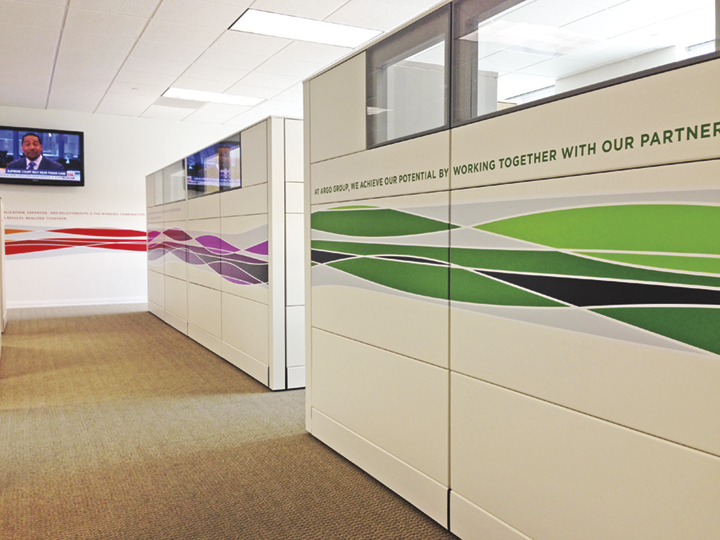
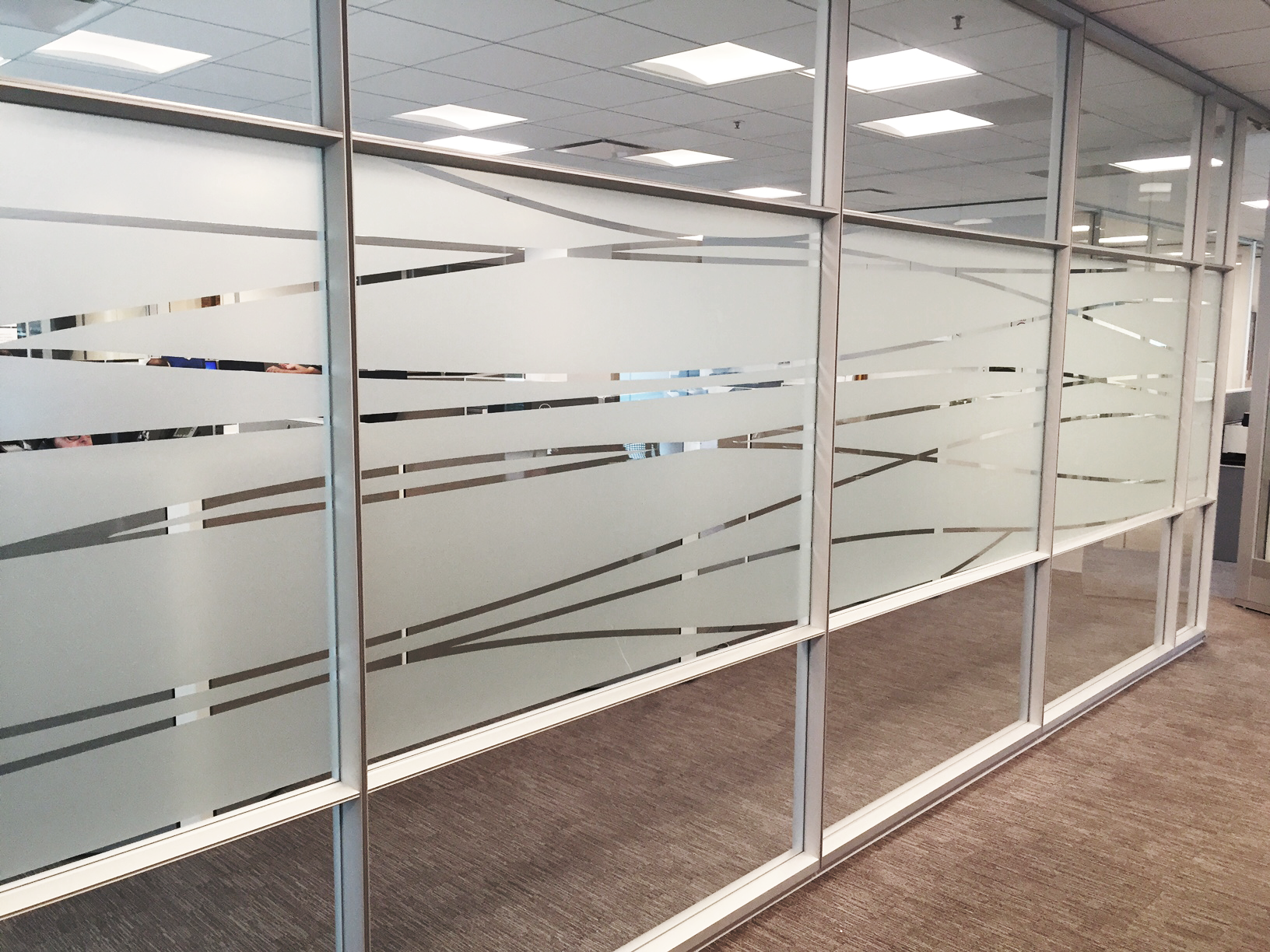
Wayfinding
Whether in large open spaces, or spaces like hospitals with many different sections, experiential design and environmental graphics are critical for establishing location, movement, and direction. Carefully placed wayfinding aides the user in navigating the space on their own, as well as influencing the flow of traffic, especially in large spaces that host hundreds and thousands of visitors a day. The ability to self-navigate improves the user’s experience and minimizes the need for ushers and other service staff to aid in directing people through the space, while setting the user at ease in a space and improving their overall experience.
Privacy and Security
Experiential design also serves a critical role in maintaining the privacy and security of a space. Frosted glass, one-way graphics, and other techniques can minimize visual access to private spaces while giving users inside the space an unobstructed view. By using graphics instead of walls, it allows light to still pass through and make a space feel bigger and unrestricted, without sacrificing safety or security.
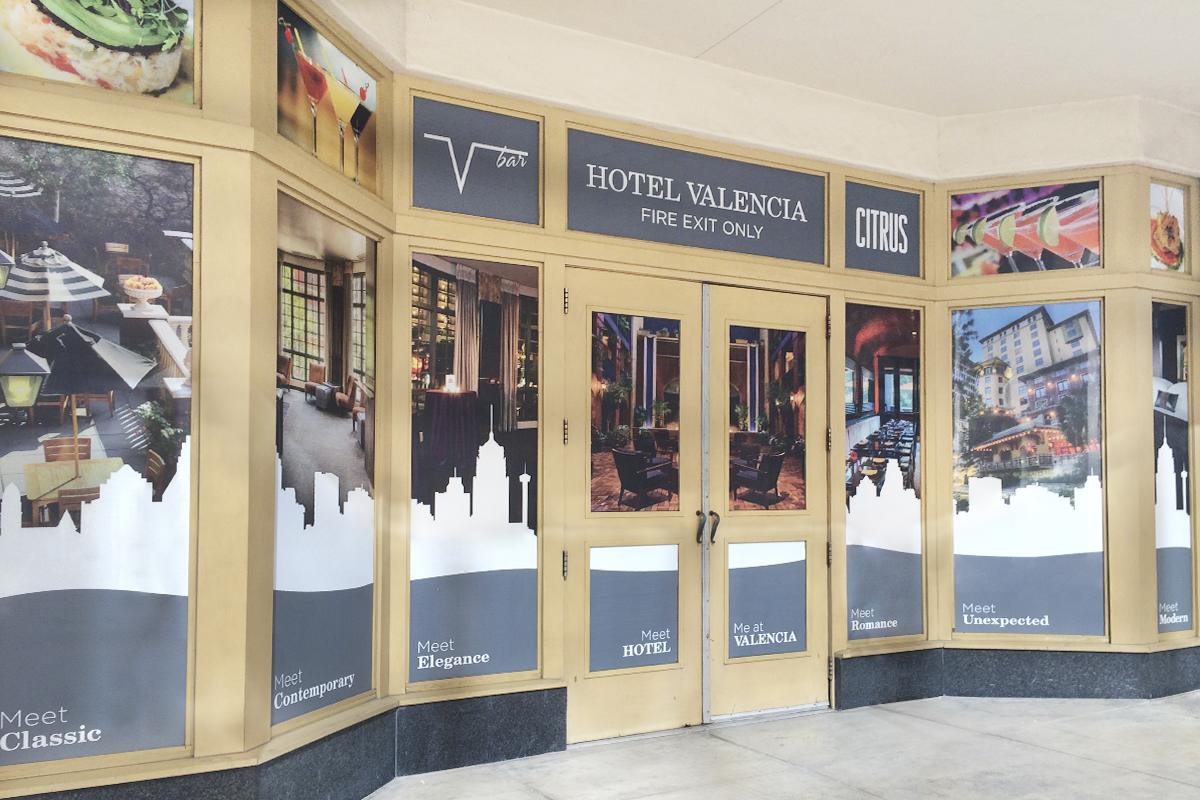
A great example is the window panels we created for the Hotel Valencia. The hotel is located in downtown San Antonio and had many unwelcomed guests entering from the street. To maintain access and visibility for guests and employees while discouraging unwanted traffic, we installed one-way graphics that blocked people from the outside from seeing in, while allowing patrons inside to see out. The graphics also created a sense of space and identity, conveying the Hotel Valencia brand in a way that still engaged with external viewers in a positive way.
Event or Time Specific Occasions
Experiential design is also often leveraged to help mark a special occasion in a permanent space or to support a temporary event such as a festival or race. Centennial celebrations, sports tournaments, and anniversaries are often conveyed through permanent spaces with temporary graphics and enhancements such as banners, signage, wall decals, and other materials. Temporary spaces are often erected for festivals and races and can be as simple as a few banners and signs, or as elaborate as creating a temporary popup store, like what we did for the Corner Store Country Run. This allows one to utilize experiential design to turn an open parking lot or everyday workplace into a completely different space for a few days or weeks.
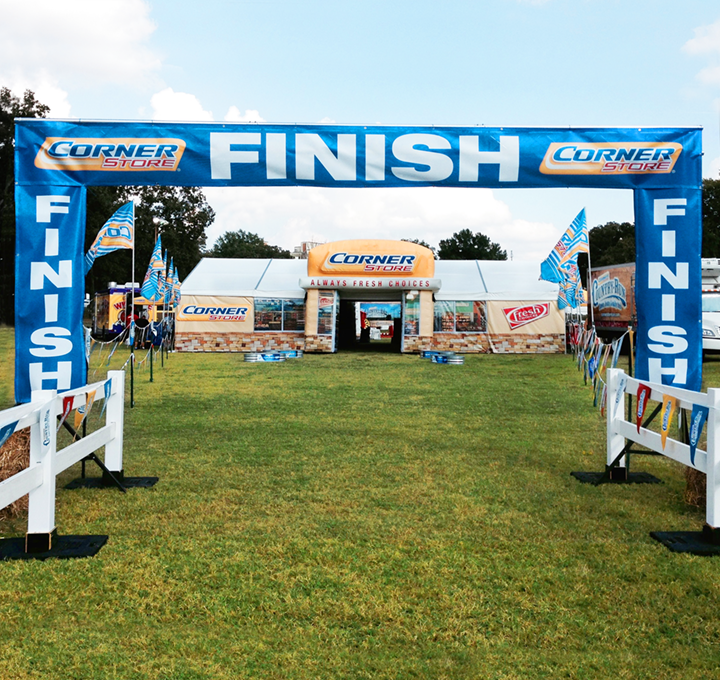
Sense of Place
Overall, experiential design is a critical element to creating a vibrant, functional, and engaging space for all users, be they employees or customers. This type of design elevates a space and the brand to a whole other level, which can be a critical advantage in a highly competitive marketplace. When looking to leverage experiential design, its best to find and select a firm that is experienced in designing for a complete space and in producing a wide variety of graphics and materials outside of digital, including printed and fabricated elements. It’s easy for a good design on a computer screen to fall apart and turn to junk with improper execution. So, to protect your brand and your investment, select a firm with a track record and ask to see examples and testimonials from other projects.

